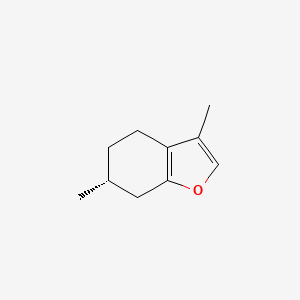| Authors | Title | Published | Journal | PubMed Link |
|---|---|---|---|---|
| Rios-Estepa R et al. | Mathematical modeling-guided evaluation of biochemical, developmental, environmental, and genotypic determinants of essential oil composition and yield in peppermint leaves. | 2010 | Plant Physiol. | pmid:20147490 |
| Khojasteh SC et al. | Metabolism and toxicity of menthofuran in rat liver slices and in rats. | 2010 | Chem. Res. Toxicol. | pmid:20945912 |
| Ibrahim MA et al. | Elevation of night-time temperature increases terpenoid emissions from Betula pendula and Populus tremula. | 2010 | J. Exp. Bot. | pmid:20181662 |
| Apel MA et al. | Chemical composition and toxicity of the essential oils from Cunila species (Lamiaceae) on the cattle tick Rhipicephalus (Boophilus) microplus. | 2009 | Parasitol. Res. | pmid:19421776 |
| Sapra B et al. | Percutaneous permeation enhancement by terpenes: mechanistic view. | 2008 | AAPS J | pmid:18446512 |
| Gyoubu K and Miyazawa M | In vitro metabolism of (-)-camphor using human liver microsomes and CYP2A6. | 2007 | Biol. Pharm. Bull. | pmid:17268056 |
| Ferguson LJ et al. | 14C-labeled pulegone and metabolites binding to alpha2u-globulin in kidneys of male F-344 rats. | 2007 | J. Toxicol. Environ. Health Part A | pmid:17687727 |
| Miyazawa M and Gyoubu K | Metabolism of (-)-fenchone by CYP2A6 and CYP2B6 in human liver microsomes. | 2007 | Xenobiotica | pmid:17484521 |
| Latham JR et al. | The mutational consequences of plant transformation. | 2006 | J. Biomed. Biotechnol. | pmid:16883050 |
| Turner GW and Croteau R | Organization of monoterpene biosynthesis in Mentha. Immunocytochemical localizations of geranyl diphosphate synthase, limonene-6-hydroxylase, isopiperitenol dehydrogenase, and pulegone reductase. | 2004 | Plant Physiol. | pmid:15542490 |
Menthofuran
Menthofuran is a lipid of Prenol Lipids (PR) class. The involved functions are known as Process, conjugation, radiochemical, Synthesis and Enterohepatic Circulation. Menthofuran often locates in Microsomes. The associated genes with Menthofuran are 4S-limonene synthase, CYP1A2 gene, CYP2E1 gene, CYP2D6 gene and CYP2C9 gene.
Cross Reference
Introduction
To understand associated biological information of Menthofuran, we collected biological information of abnormalities, associated pathways, cellular/molecular locations, biological functions, related genes/proteins, lipids and common seen animal/experimental models with organized paragraphs from literatures.
What diseases are associated with Menthofuran?
There are no associated biomedical information in the current reference collection.
No disease MeSH terms mapped to the current reference collection.
PubChem Associated disorders and diseases
What pathways are associated with Menthofuran
There are no associated biomedical information in the current reference collection.
PubChem Biomolecular Interactions and Pathways
Link to PubChem Biomolecular Interactions and PathwaysWhat cellular locations are associated with Menthofuran?
Visualization in cellular structure
Associated locations are in red color. Not associated locations are in black.
Related references are published most in these journals:
| Location | Cross reference | Weighted score | Related literatures |
|---|
What functions are associated with Menthofuran?
Related references are published most in these journals:
| Function | Cross reference | Weighted score | Related literatures |
|---|
What lipids are associated with Menthofuran?
There are no associated biomedical information in the current reference collection.
What genes are associated with Menthofuran?
Related references are published most in these journals:
| Gene | Cross reference | Weighted score | Related literatures |
|---|
What common seen animal models are associated with Menthofuran?
There are no associated biomedical information in the current reference collection.
